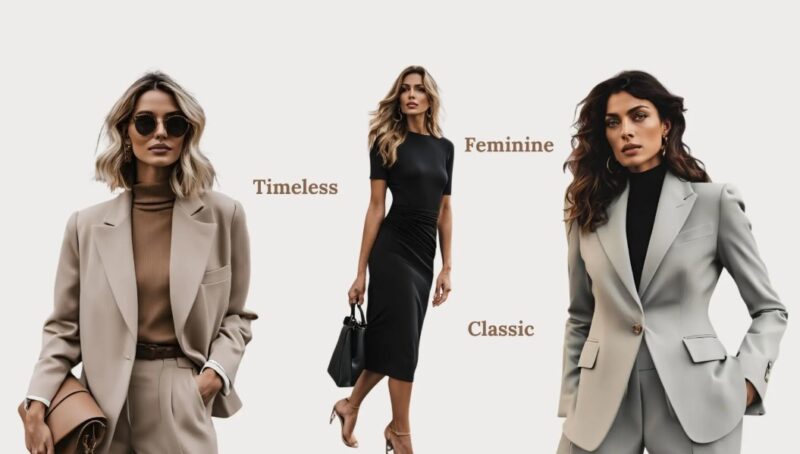Italian style has long stood for effortless sophistication, balance, and quiet confidence. A wardrobe built on this foundation is not about chasing trends but about mastering form, fit, and fabric.
The concrete answer to achieving true Italian elegance is simple: invest in fewer, better pieces that highlight quality and authenticity over quantity.
Each garment should communicate grace without shouting for attention, blending traditional craftsmanship with subtle modern touches.
The Foundation ─ Quality Over Quantity
Italian wardrobes are built, not bought. Every piece serves a purpose and lasts for years because of exceptional craftsmanship and material. When building yours, begin by cutting out fast fashion entirely. Instead, focus on garments made from natural fibers, fine cotton, wool, silk, linen, and cashmere.
Quality stitching, hand-finishing, and perfectly balanced proportions distinguish a refined wardrobe from a disposable one. For example, a well-cut blazer made from Italian wool can anchor dozens of outfits across seasons. The rule is not to own more but to own better. When you open your wardrobe, everything should work together effortlessly.
|
Essential Italian Materials |
Why They Matter |
| Wool and Cashmere | Timeless, breathable, long-lasting |
| Silk | Adds sophistication and texture |
| Linen | Perfect for warm climates and natural drape |
| Cotton Poplin | The foundation of crisp shirts and dresses |
The Core Pieces Every Italian Wardrobe Needs

Think of your wardrobe like a capsule built on structure and refinement. Italian elegance depends on neutral tones, well-fitting silhouettes, and a few standout accessories that feel personal rather than loud.
- The Perfect White Shirt
No item captures Italian simplicity better. Choose a crisp, structured shirt with tailored seams. It can move from morning meetings to evening aperitivo without effort.
- The Tailored Blazer
An essential symbol of Italian craftsmanship. Opt for unstructured shoulders for comfort and an elegant silhouette. A navy or soft camel blazer pairs equally well with trousers or jeans.
- High-Quality Trousers or Tailored Jeans
Fit is everything. A slim but not tight line elongates the leg and adds polish. Italian men and women both rely on well-pressed trousers that never lose their shape.
- Leather Shoes and Handbags
Invest in handmade leather. Italy’s long tradition in leather goods, from Florence to Milan, has created a benchmark for durability and aesthetic perfection. Clean lines, subtle stitching, and neutral shades define elegance.
- Silk Accessories and Shawls
Accessories are where the Italian wardrobe truly comes alive. For example, a silk scarf or wrap instantly transforms a minimal outfit into a statement of quiet confidence. A curated collection of luxurious pieces like Elizabetta Shawls and Wraps gives that timeless finishing touch, refined, versatile, and true to Italian artistry.
The Italian Philosophy of Dressing

At its heart, Italian style is about harmony. Every outfit should feel balanced, from texture to color. Italians rarely mix too many bold elements. Instead, they rely on contrast through quality, matte linen with smooth silk, structured wool with soft leather.
Color plays a crucial role. The foundation tones, cream, navy, beige, gray, and black, form the canvas. Accent colors, like burnt orange or olive green, are added subtly, often through accessories or stitching details. The goal is coherence, not flash.
Equally important is how you wear your clothes. Italians believe that confidence and posture complete an outfit. Perfect tailoring means you can move freely, without the clothes weighing you down.
|
Element |
What Defines Italian Elegance |
| Fit | Contours the body naturally without tightness |
| Fabric | Breathable, tactile, sourced from heritage mills |
| Palette | Muted neutrals with controlled color accents |
| Function | Transition from day to evening seamlessly |
How to Shop Like an Italian
Shopping with intention is what separates timeless wardrobes from cluttered ones. Italians approach purchases as long-term investments, not weekend splurges. They look for craftsmanship, longevity, and emotional connection to each item.
When you buy, ask three questions:
- Will it still look elegant in ten years?
- Can I wear it in at least three different settings?
- Does it reflect my personality without excess?
Accessories deserve the same consideration. A silk wrap, for instance, can be worn in countless ways, around the neck, over shoulders, or as a belt e each use revealing a new layer of refinement. Italian brands that maintain traditional printing, hand-rolled hems, and natural dyeing methods bring unmatched authenticity to your look.
The Middle Answer ─ Simplicity and Detail

The secret at the heart of Italian elegance lies in paradox, simplicity built on detail. Every elegant Italian outfit appears effortless because of the attention to invisible precision: the alignment of seams, the drape of fabric, the subtle sheen of silk, or the understated luster of polished leather shoes.
An Italian wardrobe never tries too hard. You will not find loud logos or experimental silhouettes. Instead, you find garments that stand out quietly because of proportion, material, and care. Even a black dress or a charcoal suit, when cut and worn properly, speaks volumes about restraint and confidence.
This approach allows you to dress elegantly in any setting. Whether strolling along Lake Como, attending a gallery in Milan, or simply meeting friends for coffee, you radiate the same composed ease.
Seasonal Rotation and Longevity
Another pillar of timeless Italian style is respect for the seasons. Italians rotate wardrobes with the rhythm of the year, linen and light cotton in summer, wool and cashmere in winter. This not only preserves fabric but also reinforces mindfulness toward what you wear.
Proper maintenance is essential. Store leather items in breathable bags, fold knitwear rather than hanging it, and let silk accessories rest away from sunlight. Clothing should be treated as heirlooms, not consumables. Many Italian families still pass down tailored coats or scarves, a testament to lasting craftsmanship.
|
Season |
Core Fabrics |
Key Pieces |
| Spring | Cotton, silk | Trench coat, lightweight scarf |
| Summer | Linen, silk blends | Breezy shirts, tailored shorts |
| Autumn | Wool, cashmere | Camel coat, fine sweaters |
| Winter | Heavy wool, velvet | Overcoat, leather gloves |
The Role of Accessories in Defining Elegance

Accessories define the final impression. Italians often start with one central piece, a scarf, a belt, or a pair of shoes, and build the outfit around it. Shawls and wraps, for example, can highlight tone and texture while softening the structure of tailored garments.
These handcrafted pieces often feature classic Italian motifs and color palettes inspired by Florence or Venice, ensuring they never feel dated.
Such details transform an outfit from well-dressed to truly refined. They embody sprezzatura, that uniquely Italian art of appearing naturally stylish without visible effort.
Conclusion ─ Elegance as a Lifelong Practice
Building a timeless wardrobe that reflects Italian elegance is not a one-time project; it is an ongoing practice of refinement. The goal is to develop a relationship with your clothes where every choice aligns with comfort, proportion, and authenticity.
By curating quality materials, focusing on balanced design, and mastering the power of simplicity, you create a wardrobe that matures gracefully with you. The essence of Italian elegance is not wealth or labels; it is the quiet confidence of knowing you have chosen well.

